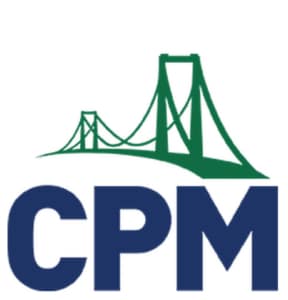
Seventh-grade students standing at Vertical Non-Permanent Surfaces (VNPSs), working collaboratively on percent error tasks, exhibiting puzzlement yet persevering, is what was taking place in my classroom on an early spring day. As a teacher field testing Inspiring Connections Course 2, class periods like this are now more typical, which, I have to admit, has made the time and effort worth it for me and my students.
When I first learned that CPM was in the writing process for a new curriculum, my curiosity was piqued. After being accepted as a field tester, and going through the summer 2022 professional learning opportunity offered by CPM, I felt excited, prepared, and inspired for the upcoming school year.
As my students and I have experienced Inspiring Connections Course 2 together throughout this year, there are a few things that stand out to me: intentionality, engagement, and rigor.
• Intentionality: Each lesson is slated to take one day and includes an intentional Launch, Lesson, and Closure. When planning and working the lessons ahead of time, the Authors’ Vision (AV) describes potential teacher moves and what to be on the lookout for. Not only does the curriculum provide me with a vision of what the lesson is going to look like prior to facilitating with students, but it intentionally and regularly incorporates social-emotional learning and inclusive strategies, and language routines. The closure activities connect to the learning targets and lesson experiences, providing students with a structure to consolidate thinking independently and collaboratively.
• Engagement: Students engage in their learning through a variety of venues (VNPSs, Mathematician’s Notebooks, Desmos, etc). In previous years, I always worked with teams and students to “make their thinking visible.” This year, I have the capacity to visibly see the thinking of all teams while they are at their VNPSs. Together, we are then able to critique and reason through what teams are thinking in a purposeful and sequential way. Students are challenged on a consistent basis and pushed to apply and connect their thinking from previous learning to new tasks.
• Rigor: Inspiring Connections has increased the rigor and the expectation of what students should know and be able to do (compared to my experience with Core Connections). With the increase in rigor comes an increase in teacher support in monitoring and providing feedback to students, in the form of connecting Reflection & Practice questions to specific lessons, and providing ample opportunities for students to self-reflect as learners. The result is that students’ learning is progressing towards proficiency with the learning targets.
When preparing to teach each lesson, I always:
• complete the problems ahead of time (both from the lesson and the Reflection & Practice)—this is probably the single most important strategy I have experienced to support a successful lesson;
• check the Reflection & Practice question that is connected to that day’s learning target (which is communicated in the Mathematician’s Notebook that each student has), as it helps me to increase my understanding of the lesson goal and/or focus on a certain aspect while teaching the lesson;
• get excited when I see a “Data Chat” launch, because I feel like the addition of more data analysis has a positive impact on students, supporting them in noticing and wondering about what is being communicated and what may not be communicated within a representation; and,
• remind myself that there are going to be challenges that my students and I experience, as we all try something new with the end goal of improving ourselves as people, mathematicians, and learners.
To say that my students and I have benefited from this experience of field testing Inspiring Connections Course 2 is a gross understatement. I have seen my students grow in their understanding of society, mathematics, and one another. Together, we have been inspired to continue our journey, and invite others to inspire connections too!

Sara McKittrick
Omro, WI, smcki@omro.k12.wi.us
